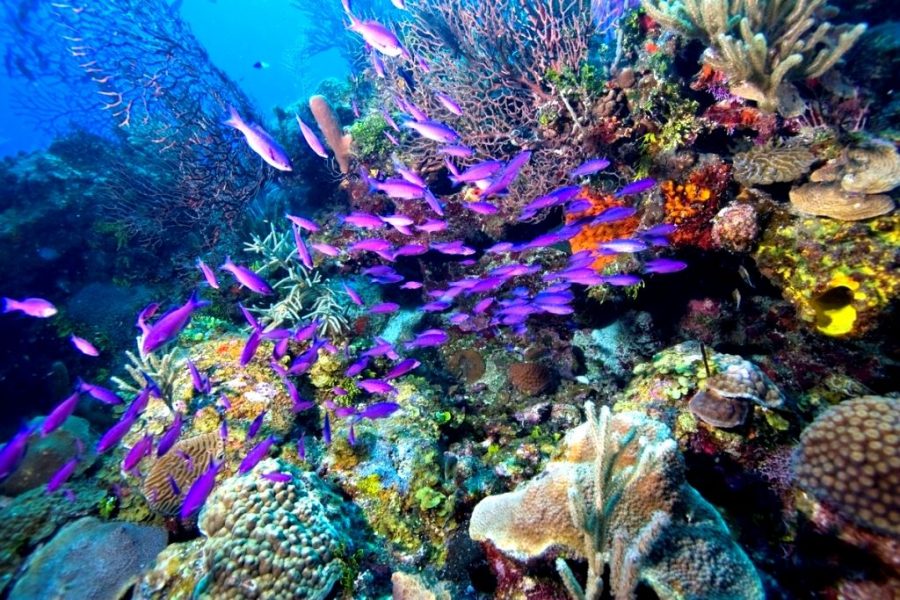Reef-Safe Sunscreen
May 15, 2019
As you pack your bags for summer trips, make sure to take sunscreen! However, choose wisely because some sunscreens are harmful to coral reefs. Coral is actually an animal and it’s endangered due to environmental issues such as climate change, hurricanes, pollution, and toxic chemicals used in sunscreen! In fact, National Geographic wrote an article in 2017 titled, “Coral reefs could be gone in 30 years.” It’s important to stop expanding the list of detriments to coral reefs by using sunscreen that is reef-safe, particularly in locations where the use of sunscreen is concentrated, such as popular diving, swimming, and snorkeling sites within our national parks.
Why is some sunscreen harmful to coral?
When tourists swim in the ocean, their sunscreen comes off in the water and has the potential to damage wildlife. Sunscreen that contains chemicals such as oxybenzone and octinoxate kills coral by bleaching it–leaving it vulnerable to infection, diminishing its ability to absorb nutrients and damaging its DNA. While the government hasn’t agreed upon a formal definition, ‘reef-safe’ generally means that the sunscreen doesn’t contain these chemicals and isn’t a threat to wildlife.
Where can you purchase reef-safe sunscreen and what should you look for on the label?
You can shop for reef-safe sunscreen both at local stores and online.
Check for a reef-safe sunscreen label. This is usually a good indication that the sunscreen is safe, but always check the ingredients list to make sure that oxybenzone and octinoxate are not included. Another option instead of traditional rub-in sunscreen is mineral-based sunscreen, but make sure that it contains zinc oxide and titanium dioxide and is non-nano (meaning the particles are big enough that coral can’t absorb them).
Even with oxybenzone and octinoxate identified as damaging to reefs, there’s controversy over which chemicals are harmful. According to Consumer Reports, some sunscreen labeled reef-safe contains the chemicals octocrylene, homosalate, and octisalate which could also endanger marine life. The moral of the story is to do your research before you purchase sunscreen!
Has there been any action taken to protect reefs from sunscreen?
Yes! Hawaii passed a bill banning sunscreen containing oxybenzone and octinoxate. This is a big deal because Hawaii is a major tourist spot that accumulates a lot of dangerous sunscreen in its ecosystem. While there are still more chemicals that hurt marine life, it’s a good start that at least the two of the main toxic chemicals are no longer allowed.
In addition, Florida passed a law in February banning sunscreens with the same two toxic chemicals. This law will help save the coral reefs in the Florida Keys, a major tourist attraction and natural wonder.
By taking action in every way possible, we can each do our part to decrease the toxicity that humans bring to the natural world.


